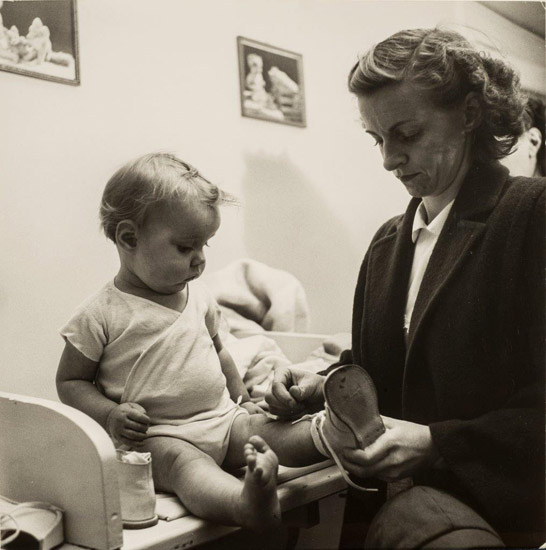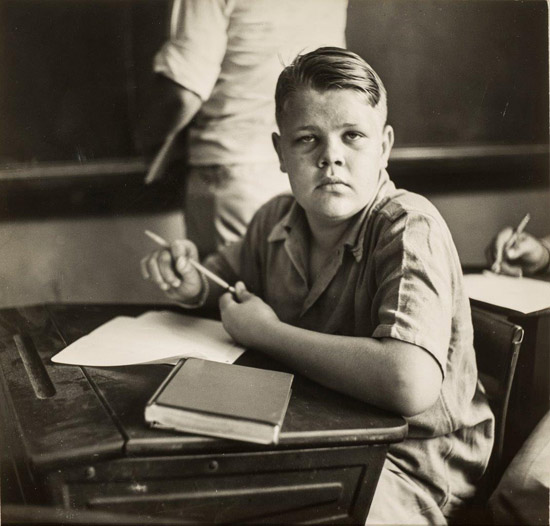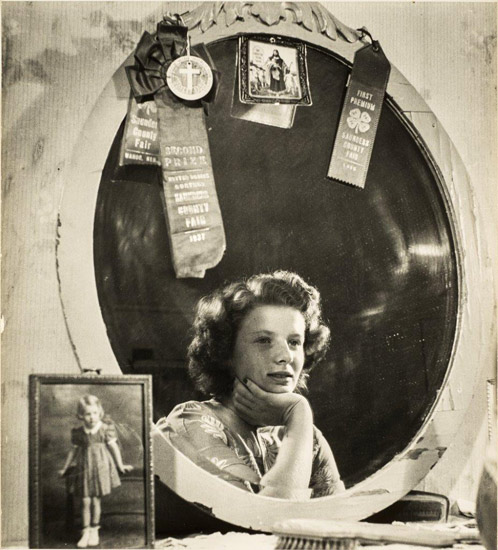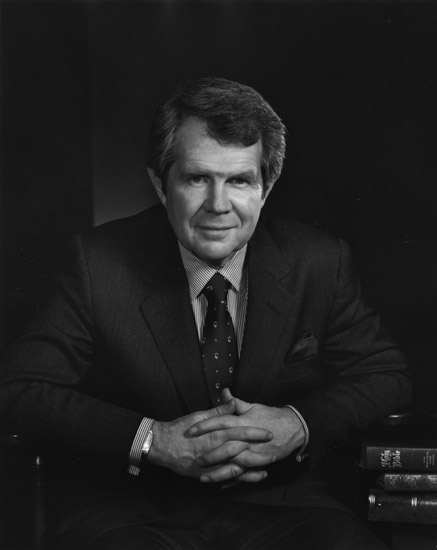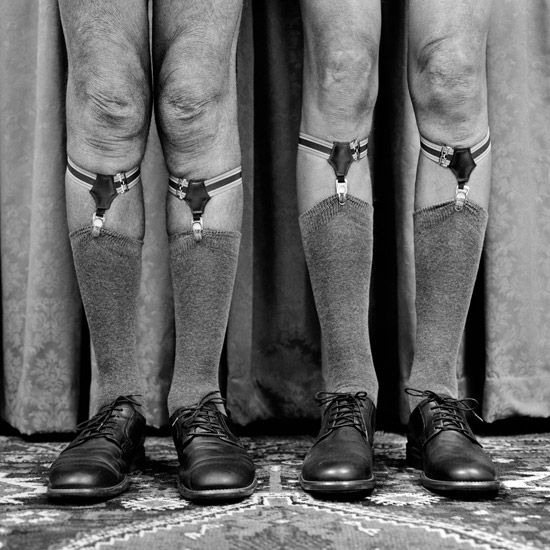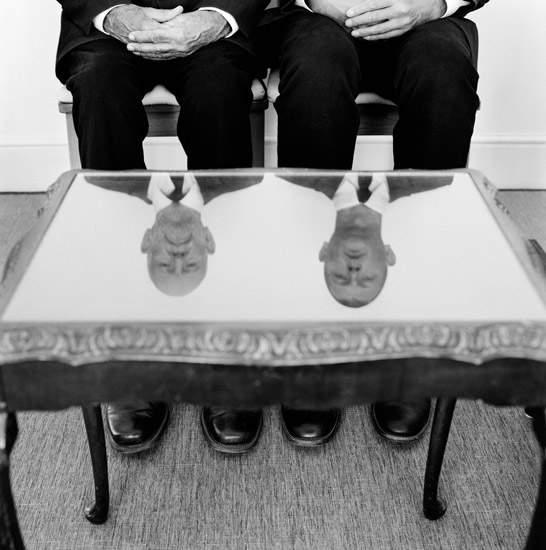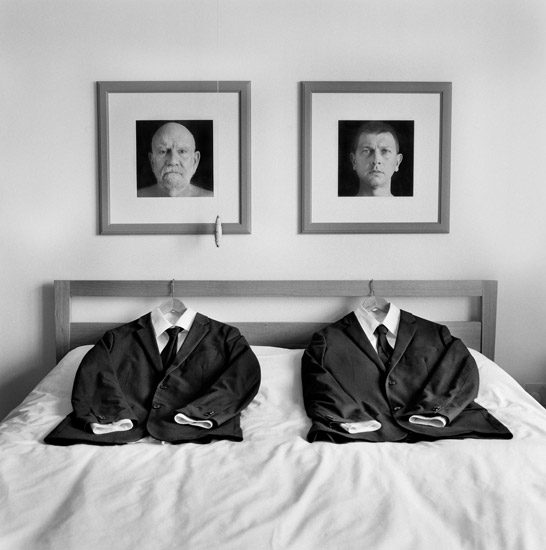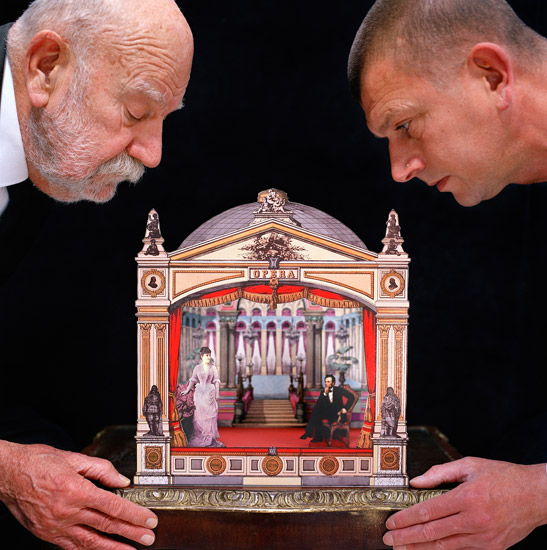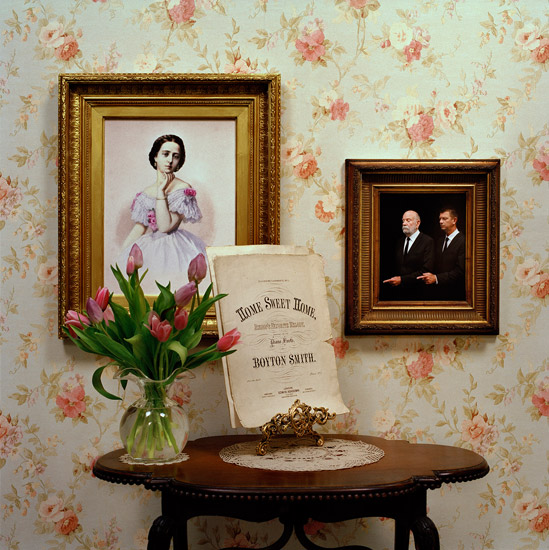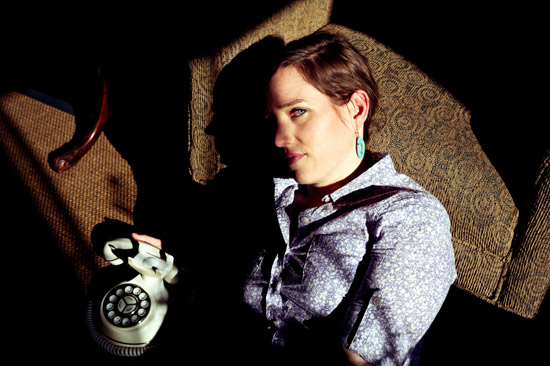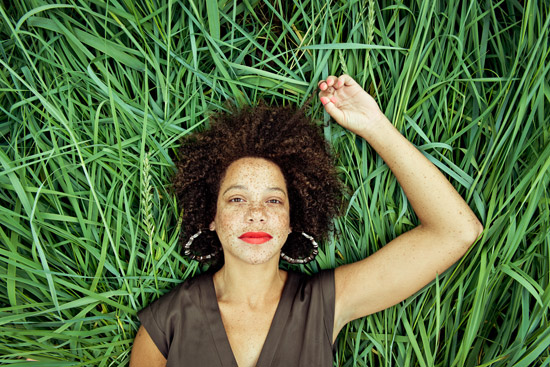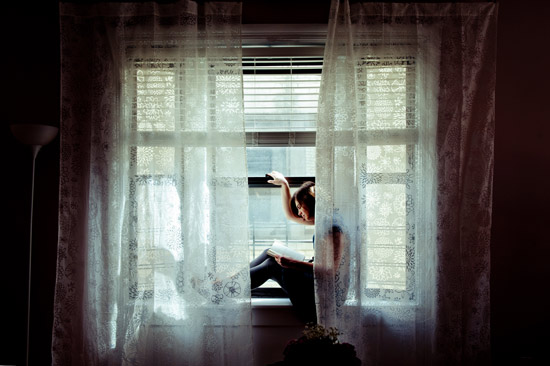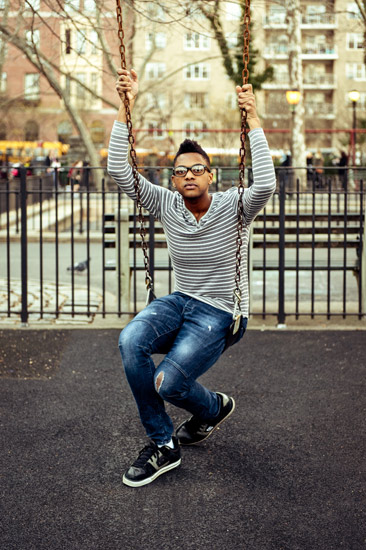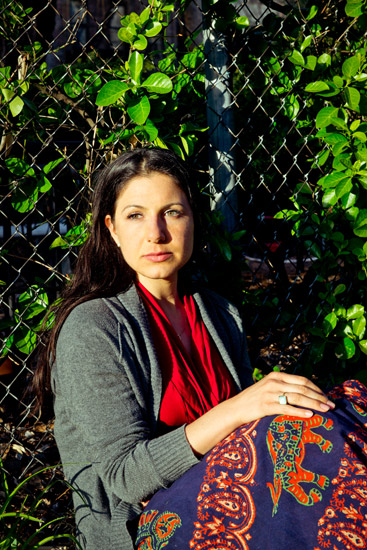If you are a regular here at aCurator you will be familiar with
Rob Hann's photographs. This is his sixth magazine feature!! Rob took off on his annual road trip out west earlier this year and I always love what he comes home with.
Happy summer to our northern-hemisphere-dwelling friends.
"I took my first road trip shooting in the American West in 2001. It felt like a faraway place, exotic and mysterious to a person living in London. I moved to New York City in 2003 and I hit the road with my camera whenever I can. I've come to realise that going to faraway places is an important part of my practice.
"I like to feel a little bit lost out there, to not know what I might come across as I head out at sunrise each morning. On my latest trip I concentrated on California, a place that still feels faraway, exotic and mysterious to a person living in New York City."
Read more about Rob Hann, and how he sells his work in New York, in a piece we did over at
aPhotoEditor.

"New York" 1948, Esther Bubley
"During America's golden age of photojournalism, Bubley cast her discerning eye over a broad range of subjects including beauty pageants, boarding houses, schools, clinics and kitchens. Her immersive working process and compassion for her subjects yielded deeply insightful images that also subtly critique American culture on the eve of the Cold War and Civil Rights movement."
"At the well-baby clinic" 1953
Esther Bubley's archive is
represented by her niece, Jean Bubley. We are both members of the
American Photography Archive Group, an organization that includes many of the greats including Ruth Orkin, Arthur Rothstein, Philippe Halsman, and Fred W. McDarrah.
Jean Bubley will discuss the work of her aunt in a gallery talk at the
Phillips Collection in Washington, DC, August 27, 2015.
"Born in Phillips, Wisconsin, Bubley developed a passion for photography while serving as her high school's yearbook editor. She set out for New York City in 1940 to become a professional photographer. After a brief stint at Vogue magazine, she moved to Washington, D.C., and worked as a darkroom assistant to Roy Stryker at the Office of War Information (OWI). With Stryker's encouragement, Bubley began photographing neighborhoods and activities around Washington, recording the effects of World War II on the community. One of few OWI photographers who worked primarily with 35 mm and other small handheld cameras, Bubley developed a dynamic point-and-shoot style that enabled her to photograph from unusual angles."
"High school, in a classroom" 1945
"During the 1930s, images created by Dorothea Lange, Margaret Bourke-White and others made clear to government agencies and commercial clients that women could excel as photographers."
Untitled
"In 1943, Stryker promoted Bubley to the position of OWI field photographer. She contributed more than 2,000 images to the OWI file over the course of that year. In these early photo-essays, Bubley's ability to capture people in natural, unaffected poses is evident. She immersed herself in her assignments, touring on buses for weeks to document American bus travel and profiling a serviceman's family at home. When Roy Stryker left the OWI in late 1943 to establish a photographic library for the Standard Oil Company, Bubley followed, documenting the impact of the oil industry around the U.S. and beyond. One of her best-known assignments for Standard Oil depicted life in Tomball, Texas. Living in the town for six weeks, Bubley took more than 600 pictures documenting the town's commerce, industry, schools, churches and recreation. In her photographs, Tomball's citizens appear natural and unaffected, often unsmiling or not looking at the camera - a reflection of the artist's ability to work unnoticed."

"Backstage in Quest to Be Miss America, Atlantic City, New Jersey" 1957
All images by Esther Bubley, courtesy Jean B. Bubley, thanks to Nicole Straus Public Relations and Margery Newman.

Monica Smith, New York, May 2015 © Marissa Roth
This portrait is the culmination, in photographs at least, of
Marissa Roth's now 31-year-long journey.
"This portrait of Monica Smith, who is Anne Frank's second cousin, is the final portrait of my 31-year odyssey that is the global photo essay,"
One Person Crying: Women and War."
"I had the opportunity to photograph and interview Mrs Smith one day before her 92nd birthday this past May, at home in Manhattan. It was a great honor and profound pleasure to meet her and to feel her indomitable spirit which continues to prevail in spite of the many emotional heartbreaks that she endured in her life.
"Monica Smith was born Dorothee Wurzburger in Stuttgart, Germany, on May 10, 1923. Her mother and Anne Frank's mother were first cousins, and Anne was six years younger than her. In 1938, when it became increasingly evident that the situation for Jews in Germany was dangerous, Mrs. Smith's parents put her on a Kindertransport to Holland where she was housed in an orphanage near Amsterdam.
"Anne and Otto Frank would come and visit her regularly and bring peanuts. "I didn't realize that she would become a saint. Maybe that's what was needed. Her fingers were always covered with ink".
"In 1940, Mrs. Smith was reunited with her parents and they went to England where they boarded the RMS Samaria for the transatlantic crossing that took them to New York and would save their lives."
Prints from "One Person Crying" make up a traveling exhibition. See news and updates over on the
One Person Crying blogsite.
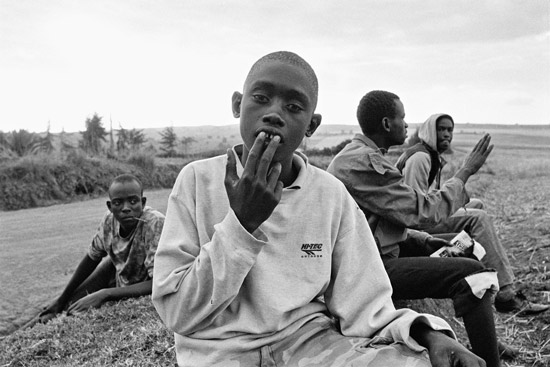
Jordan Campbell's series stood out among a few hundred entries to a competition I judged earlier this year. Jordan lives in Canada; in his bio you learn that "Before moving to Toronto, Jordan worked in the sail training industry for seven years and holds a Master 150 ton and a Chief Mate 500 ton ticket with Transport Canada." I frequently remind photographers to tell us something interesting about themselves that is not photography related because you never know when it will inspire someone to work with you.
Jordan's artist statement tells us all there is to know about his project:
"The Thorns We Walk Upon is a social documentary, which gives a glimpse into daily life at the Samburu Handicap Education and Rehabilitation Program (
SHERP), an NGO in Maralal, Kenya. Grace Senia, a teacher in the local community, established SHERP in 2001. Since then, and in an effort to accommodate a variety of needs, SHERP has become a home, a community, an orphanage, and a dormitory for children with disabilities.
With help from the Samburu town council, county council, and the Japanese embassy, Grace managed to acquire a plot of land and build two dormitories in Maralal. Over the past thirteen years, various international donors have helped build SHERP's infrastructure, however despite the available facilities SHERP's needs continue to outweigh available resources. Water, food, staff, and full time management are never present in unison, creating a challenging and complicated environment for the kids."
"Each child at SHERP has his or her own unique story. Some are left at the front gate, while others come from supportive families, which see SHERP as an opportunity for their child to receive an education. To varying degrees both the semi-nomadic culture, and the traditional misunderstanding of disability in Samburu are a part of each child's story. Their lives have been marked by much pain. In spite of this kids at SHERP come together to lean on each other.
The Thorns We Walk Upon attempts to place individuals before their disability while speaking towards the questions and landscape they must navigate. Theirs is a path marked by layers of hostility. What is taken for granted by most, even in the arid hills of Samburu, are real and immediate concerns for kids with a disability. Their struggle for food and a sense of home, in many ways, is an odyssey for self worth.
Despite living at SHERP these glimpses were viewed as a guest. The Thorns We Walk Upon tries to acknowledge as much. This series reflects both an expression of the kids' lives and the challenges of working across difference and privilege."
Beautiful. Thanks Jordan!
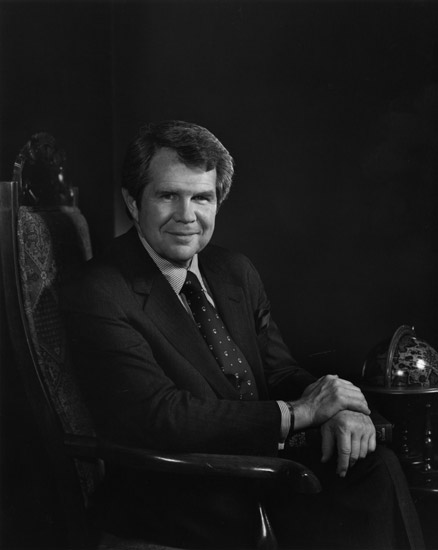
Pat Robertson from the Karsh archives.
Marion Gordon "Pat" Robertson is an American media mogul, executive chairman, and a former Southern Baptist minister, who generally supports conservative Christian ideals.
"In late 1976, Robertson predicted that the end of the world was coming in October or November 1982. In a May 1980 broadcast of The 700 Club he stated, "I guarantee you by the end of 1982 (the year he was photographed by Karsh) there is going to be a judgment on the world.""
"In September 2011, Robertson and several others who incorrectly predicted various dates for the end of world were jointly awarded an Ig Nobel Prize for "teaching the world to be careful when making mathematical assumptions and calculations."

Robert Oppenheimer, 1956 by Yousuf Karsh
"Dr Oppenheimer greeted me warmly, in 1956, at the Institute for Advanced Study, Princeton... I detected in this famous scientist a certain brittleness and I thought that the record of deep suffering was written plainly on his face. After his experiences, this was hardly surprising."

Michael Massaia's Deep in a Dream portfolio continues to expand as he spins his sunbathers to create a new performance.
It is no secret that Michael Massaia is among my very best most favourite photographers. His capabilities are exceptional. He is compelling and bemusing. His images are spectacular online and his photographs simply glorious when printed, by himself, mixing his own chemicals, cutting his own paper, mastering new talents, blowing you away.
See Michael's past features:
British photographer
John Paul Evans' bodies of work take a sideways look at traditional representations of marriage - "performative responses to the history of the wedding portrait in western art" - and feature himself and his husband, Peter.
You can see some of Evans' photographs right now, as part of the
Pride Photo Awards at Foam Museum of Photography in Amsterdam, July 31st to August 20th, 2015.
Evans is pretty prolific - check out lots more over on his
website.
Gabriela Herman's portrait series features sons and daughters of gay parents.
The Kids get a chance to tell their stories as part of the project - some of them are pretty surprising, some are funny, all of them are interesting. Gabriela began the project before the US Supreme Court ruled on same-sex marriage, addressing this strange question about whether it is in kids' interest to be raised by two people of the same sex...
Elizabeth
I asked 'Are you gay?' and he says 'Well, I haven't had any experiences to be sure.' And I think the next words out of my mouth were, 'Dad, I'm pretty sure you're gay.'
Hope
Kerry
Moshe
Danielle
Read and hear the rest of their stories
here.
Props to Gabriella and the "kids" for their collaboration, and my personal props to my dear friend
Jenny Laden, one of the founders of a camp for children of gay parents some moons ago; I believe their chosen collective noun was "Queerspawn"! Read Jenny's story
here.
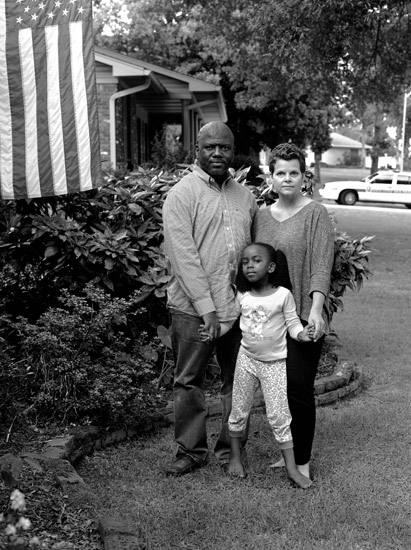
Here is a body of work from another interesting photographer I met at PhotoLucida.
Donna Pinckley showed prints from this series, "Sticks and Stones," which is a work in progress, sadly, as Pinckley continues to meet mixed race couples who experience verbal abuse because of their skin colours.
Alongside teaching, Arkansas-based Pinckley has been making strong portraits for years. When you're done here, check out her
colour work.
"For over twenty years I have photographed a particular social and cultural group of children. Before my eyes and in front of my camera they have passed through adolescence into young adulthood. My goal throughout has been to portray not how the world sees them, but how they see themselves.
"I began by working with one child at a time, but as my subjects have grown up and matured, people and relationships have replaced toys and skateboards, both in their lives and in my photographs--siblings and friends, casual acquaintances, and mostly recently, romantic partners.
""Sticks and Stones" began with an image of one of my frequent subjects and her African-American boyfriend. Her mother and I were catching up in the kitchen when she told me of the cruel taunts hurled at her daughter for dating a boy of another race. As she was speaking I was reminded of another mother in another kitchen many years ago, whose daughter had been the object of similar racial slurs. What struck me was the resilience of both couples in the face of derision, their refusal to let others define them.
"I have continued photographing interracial couples of all ages, aiming as always to capture how they see themselves, the world of love and trust they have created despite adversity. I began adding the hateful words they've been subjected to at the bottom of the images as a reminder of how the world too often sees them. For me, and I hope for viewers, the juxtaposition is stark and disturbing."



